Fat is an important nutrient, and one of these days I’ll write a post on all of its virtues—but unfortunately, today isn’t that day. If I come across as anti-fat, I can understand, but there’s a good reason why I spend so little time focused on fat: I’ve never met a climber whose diet was fat-inadequate.
Now, I can’t speak for all climbers when I postulate why this might be, but I have a few hunches:
- The pendulum of media favor has been swinging in fat’s direction for a number of years recently, and we are subtly (or overtly) influenced by the pro-fat headlines and articles.
- Many of the major climbing hubs (like my own Boulder, CO) have large populations of food-conscious individuals prone to dietary fads like the Paleo Diet or gluten-free living, and as a result climbers are more frequently exposed to the tenets of these diets than other athletic populations.
- There isn’t a strong culture of sports nutrition in the climbing community yet, so dietary trends aren’t scrutinized as heavily (or cared about as strongly) as they are in sports with established sports nutrition cultures.
- Dietary fat is easier to overdo than most people suspect.
Basically, it can be summed up by a combination of exposure and and inexperience. I can’t change your exposure to fat-friendly diet trends—nor would I want to, as I’d like you to be able to make rational dietary decisions regardless of the information and misinformation you come across—so that leaves inexperience to address. Let’s get to it!
First: How Much Fat Does a Climber Need?
Before we can actually say “most climbers eat too much fat”, we need at least a rough idea of how much fat a climber actually needs. There are a few ways you could determine this, but the best way in our case is to determine how much protein and carbohydrates you need first and then get whatever remains in your caloric budget from fat.
We know a climber should get around 120 grams of protein per day, but I usually budget 100-150 grams worth because I assume that most people aren’t fastidiously measuring protein out, may be unable to squeeze 6 meals conveniently into their day, and that a “normal mixed meal” will typically contain at least 30 grams of protein unless you go light on the meat. This means protein should contribute 400-600 calories, which is usually around 10-30% of a climber’s total caloric allowance.
I haven’t gone over determining carbohydrate needs yet, but that’s okay for now because I have casually mentioned some approximate targets percentage-wise: 45-65% for boulderers, 55-75% for sport climbers, and 60-75% for big wall climbers. In all these cases, the lower end of the spectrum is reserved for shorter, less intense days while the upper-end is devoted to longer, more intense days.
With these other energy-containing nutrients accounted for, fat will thusly contribute approximately 15-30% of a climbers diet—and I actually cap it at both ends as well, because there’s no reason to go higher than 30% and anything less than 15% could be detrimental to your health if followed long-term. For the majority of climbers this is between 40-100 grams of fat per day, with the highest concentration needing between 50-70 grams.
That may seem like a lot of fat—and it’s certainly more than enough to enjoy your diet with—but it’s really easy to blow through if you’re not careful because…
Fatty Foods Are More Energy-Dense Than Carbohydrates and Protein
I don’t just mean energy-dense in the sense that a single gram of fat contains more calories than a single gram of carbohydrates or protein (fat has 9 calories per gram, carbs and protein only 4)—I mean that fat-rich foods are denser in grams of energy-containing nutrients than carbohydrate- or protein-rich foods.
It comes down to chemistry: carbohydrates and proteins are hydrophilic (water-loving) while fats are hydrophobic (water-fearing). Basically, this means that carbohydrates and proteins love to associate with water (and hence most carb- and protein-rich foods are watery unless dehydrated) while fats reject all water (and hence are low in water). All that water increases the volume of carb- and protein-rich foods, thereby dispersing their energy and rendering them less energy-dense.
Here’s an example: an apple and a handful of nuts both contain about 26 grams of energetic nutrients (combined carbohydrates, protein, and fat)—but the apple (which is mostly carbohydrates and water) has a volume of around 150 cm3 while the handful of nuts (mostly fat) has a volume of around 50 cm3. Both contain the same number of grams of energetic material, but the fat-rich nuts squeeze all that energy in package one third the size.
If that’s still not clear enough, imagine the difference between a grape and a raisin (i.e., a dehydrated grape). A single raisin and a single grape contain the same amount of energy, but the raisin is much smaller—consequently, it’s easier to eat way too many raisins than grapes!
Thus, while most carbohydrate- and protein-rich whole foods are difficult to overeat, it’s not difficult to overeat fat-rich whole foods. But wait, there’s more! You can also easily overdo fat because…
Fats Are Sneakier Than Carbohydrates
Not only are fat-rich foods chemically more energy-dense than carbohydrates (and protein), they are sneakier as well. You can blame biology for this one.
Our tongue is, in some ways, an early detection system for the nutrients we’re eating. We can detect the presence of carbohydrates (aside from any sweetness, which we also obviously detect) and we can detect protein to a limited extent via “umami”, the savory taste that is triggered by glutamate (which proteinous foods are typically rich in), but we really can’t detect fat itself just with our taste buds (though some recent research suggests we can detect rancid fat with a taste dubbed “oleogustus”).
Instead, fat increases the appeal of food by improving its texture—its “mouthfeel”—which is certainly noticeable, but not always easy to point out. You know it when you feel it, but when you feel it you don’t instantly think “Aha! This food is fatty!” It just feels better, not greasy or fatty.
Consider, for example, the difference between baked and fried chips. One is clearly superior to the other tastewise, but the main contribution of the fat is mouthfeel, and thus the high-fat nature of a fried chip is disguised.
Ground beef is another example of the power of fat to discreetly improve food. The most common grind of ground beef is 80% or 85% because the extra fat makes it easier for poor-to-average chefs to cook a great burger (also, because it’s way cheaper). It does this not by improving the taste, but by preventing the burger from drying out—if you’ve eaten a well-prepared lean burger, then you know all those grams of fat you’re missing don’t add a single iota to the final taste.
In both cases, fat improves the food without making the food itself taste “fatty”. Generally, by the time something tastes fatty it’s absolutely loaded with fat—for example, a typical greasy sausage is over 75% fat by calorie (and over 66% fat by grams of energetic nutrient). But even without reaching the point of greasiness, the difference between a baked and fried chip is substantial (roughly 1 gram of fat in the baked chips for every 2 to 3 grams in the fried ones) and the difference between a lean and a fatty burger even more so (1 gram of fat for every 3 to 5 grams).
So yea, fat can hide, and you can’t really do much about it except be aware of the fat content of your food.
Don’t Focus on Fat
Okay, so fat-rich foods are dense in grams of fat, and apart from visual and textural clues you can’t really detect that fat—but do you really want to spend your time counting the fat in foods? No, because:
- It’s really not fun, and…
- Even if you intend to do it, most people quickly get bored and stop.
Here’s my suggestion: don’t focus on fat.
The #1 reason I see climbers end up with a fatty diet is a convergence of the four factors mentioned up top—through exposure and inexperience, climbers begin to add fats into their diet in unnecessary places and cease to worry about the fat content of foods in general. And because they’re now adding fats and no longer choosing lean options when possible, they end up overdoing it.
Health-wise and weight-wise, maybe this isn’t a big deal. Climbers, as a group, are healthier and leaner than most. But all that fat does take the place of other nutrients, whether proteins or carbohydrates, that would add a lot more to the climber’s performance and recovery.
So stop focusing on fat, and instead let fat come to you as it naturally does. If you eat a healthy diet with sufficient amounts of protein and carbohydrates, and you season those proteins and carbohydrates lightly with fats and oils, and you include reasonable amounts of nuts and seeds, and avocados, and coconuts, and chocolate, and cheese (etc.), then 9 times out of 10 you’re going to hit your fat goals just fine—and you’re going to do it because you met your other goals, and fat came along for the ride.
Some final bulletpoints:
- Don’t focus on fat, focus on the rest of your diet.
- Include fat where it makes sense, and don’t include unless it adds something tangible and necessary.
- Get your fat from whole foods, not by adding fats and oils to foods (or from chips and pastries).
- You don’t need more than 15-30% of your calories to come from fat to be healthy, and health doesn’t improve if you go beyond these figures.
Trust me: you’re getting enough fat in your diet. Now go and figure out how much extra you’re eating that you didn’t suspect!
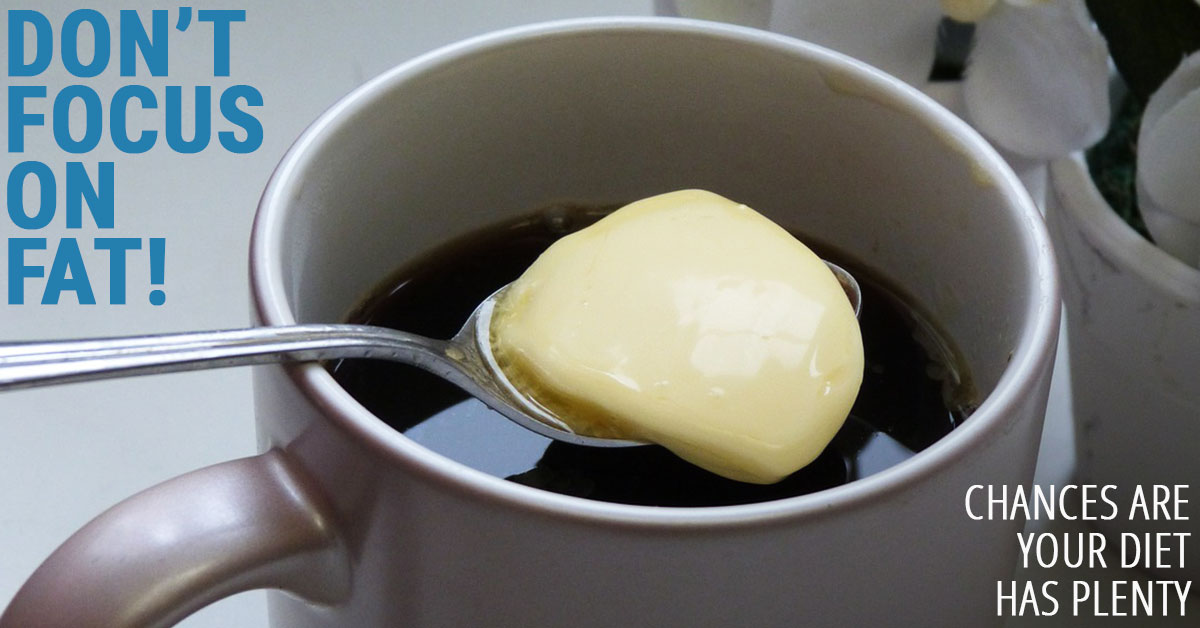


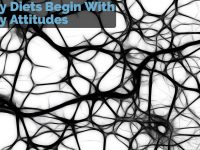

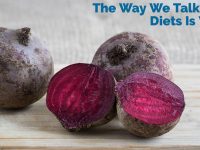
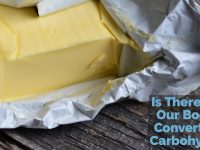
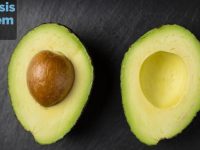







Brian,
It’s cool you’re trying to bring more awareness of nutrition to climbing, but I really disagree with the content and presentation of your views on fat and nutrition here and in your article “How Do Nutrition Needs Differ Between Types of Climbing.”
First, it totally contradicts my experience. I’ve redpointed my hardest routes and performed best on long multi-pitch routes on a diet of 60+% calories from fat. This is from 10+ years climbing and a wide range of carb/fat intake in my diet.
Second, do you have any actual evidence to support your assertions? Maybe you can cite slightly higher VO2max for carb over fat in a tightly controlled study, but where’s the evidence your recommendations have any validity for climbers in real life?
Third, the idea that there’s a single optimal macronutrient ratio strikes me as ridiculous. I do best on a high-fat, low-ish carb diet, but don’t recommend that everyone adopt it. I’m sure they’re climbers and other athletes who do best at the other end of the carb/fat spectrum. And the factors that determine one’s optimal diet go WAY beyond one’s selected discipline of climbing.
You say “stop focusing on fat” and “trust me: you’re getting enough fat in your diet.” But focussing on fats (amount and type) and increasing consumption at the expense of sugar and carbs was the single most beneficial change I’ve made in my diet.
Respectfully,
Evan
Hey Evan,
Thanks for the respectful comment—let me answer some of your points, in reverse order:
First, I don’t make the argument that there’s one single optimal macronutrient ratio, but I appreciate how I can come across that way. The difficulty lies in the written format, where I’m attempting to target a large audience. There are certainly people who do better—whether for physiological or psychological reasons—on diets that differ from the one I broadly recommend. When something is working for someone, I never say, “I’m sorry, you’re wrong”, but rather encourage them whole-heartedly to go for it. It’s possible they are in fact wrong (or that I am, in their case), but it’s really beside the point because A) They’re happy, their diet is (hopefully) healthy, and they feel good about their climbing and B) when trying to convince someone to consider alternatives to any closely held conviction, attacking that conviction is a sure fire way to end the discussion with nobody happy and nobody convinced of anything except their rectitude.
So, when I write articles like these, I’m making recommendations not with the intention of telling everyone “This is it—do as I say or suffer”, but rather to advise on what I know through education and research to be an effective diet.
Second, I have written other articles on why fat isn’t particularly useful as a fuel for climbing. Here’s one of them here. In the case of climbing, the benefits of carbohydrates over fat goes well beyond the slightly better oxygen efficiency of carbs for ATP production because climbing is, by and large, an anaerobic sport. Creatine is the most significant source of anaerobic ATP production for climbers, but if we limit carbs in our diet then we limit glycogen storage and subsequently limit the only other anaerobic energy pool in the body. Since the anaerobic energy pools are capable of generating ATP anywhere from 4-8x faster than fat oxidation, this burden will be felt by most climbers as a lack of power, and they will not be able to perform at their peak.
Unfortunately, climbers (and climbing nutrition especially) are an understudied group. But basic biochemistry informs us that even if some fine details are different, the broad brushstrokes between climbing and other anaerobic sports should be similar. As far as I’m aware, no study has ever demonstrated that a high-fat diet is superior to a moderate-to-high-carb diet in an anaerobic athlete—and even in endurance athletes, the best that’s ever been demonstrated is that high-fat diets can be equal to high-carb, but not superior. So, from a sports science viewpoint, it would be surprising if performance nutrition requirements for climbers veered radically from what we know from every other sport.
Finally, I understand that what I write will at times contradict the experiences of others. As I wrote earlier, if what you’re doing right now is working for you, then keep at it! Climb hard and be well! But many people haven’t found what works for them, and I’m here to help them (hopefully) find it.
Disagree or not, I hope you stick around!
Cheers,
Brian
Brian,
Thanks for the thoughtful response.
We may not agree on everything, but I do appreciate what you’re doing in principle and will definitely stick around.
Best,
Evan
Glad to see someone pointing athletes away from some of the revisionist thinking on fats and back towards a more whole foods approach. It’s worth pointing out that there is even more evidence now that a plant based whole foods approach to eating yields even better long-term results in terms of both health and athletic performance, with an emphasis on long term health. Those diets rely on whole foods plants and starches with no added fats, basically vegetables, starches, and grains in their natural state, to provide all the fats, proteins, and carbs needed. That gets you to about 10-15% fat tops, and less protein than you recommend, but these are diets that millions of rural Asians lived on for years (with very small amounts of animal products) and they show remarkable results in Westerners who eat this way. I know many fat focused eaters will reject this information out of hand, but for those curious, and for those interested in long-term health, it’s worth studying the growing volume of evidence coming out on these diets. Plenty of source material available if you just google whole foods plant based diets. One excellent new book on the subject is by Dr. Garth Davis called Proteinaholic.
I like seeing more science-based nutrition information for climbers out there. Good on-ya!
You may be interested in attending the 3rd International Rock Climbing Research Association’s Congress held in the U.S. for the first time this August. I will be presenting as part of a nutrition panel of RDs interested in climbing nutrition on Saturday, Aug 6 in Telluride, CO. See more info here: http://www.ircra.rocks/#!congress-schedule/c22bl
My best,
Lanae
Thanks! That’s my goal here—more science-based nutritional decision making and less pseudoscience.
It’s the second time this week someone has brought to my attention the IRCRA’s congress in Telluride. Sounds interesting, I’ll try to make it.
Cheers,
Brian